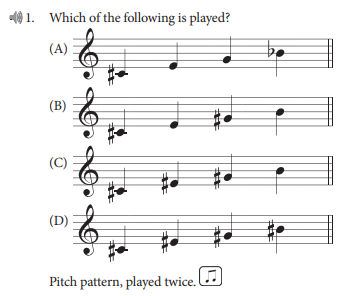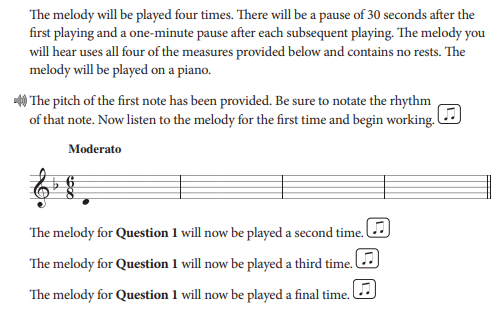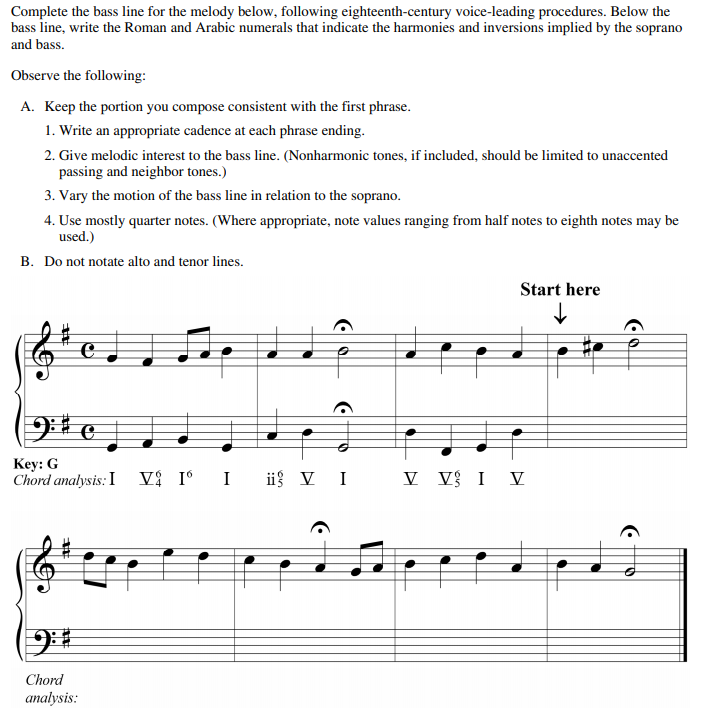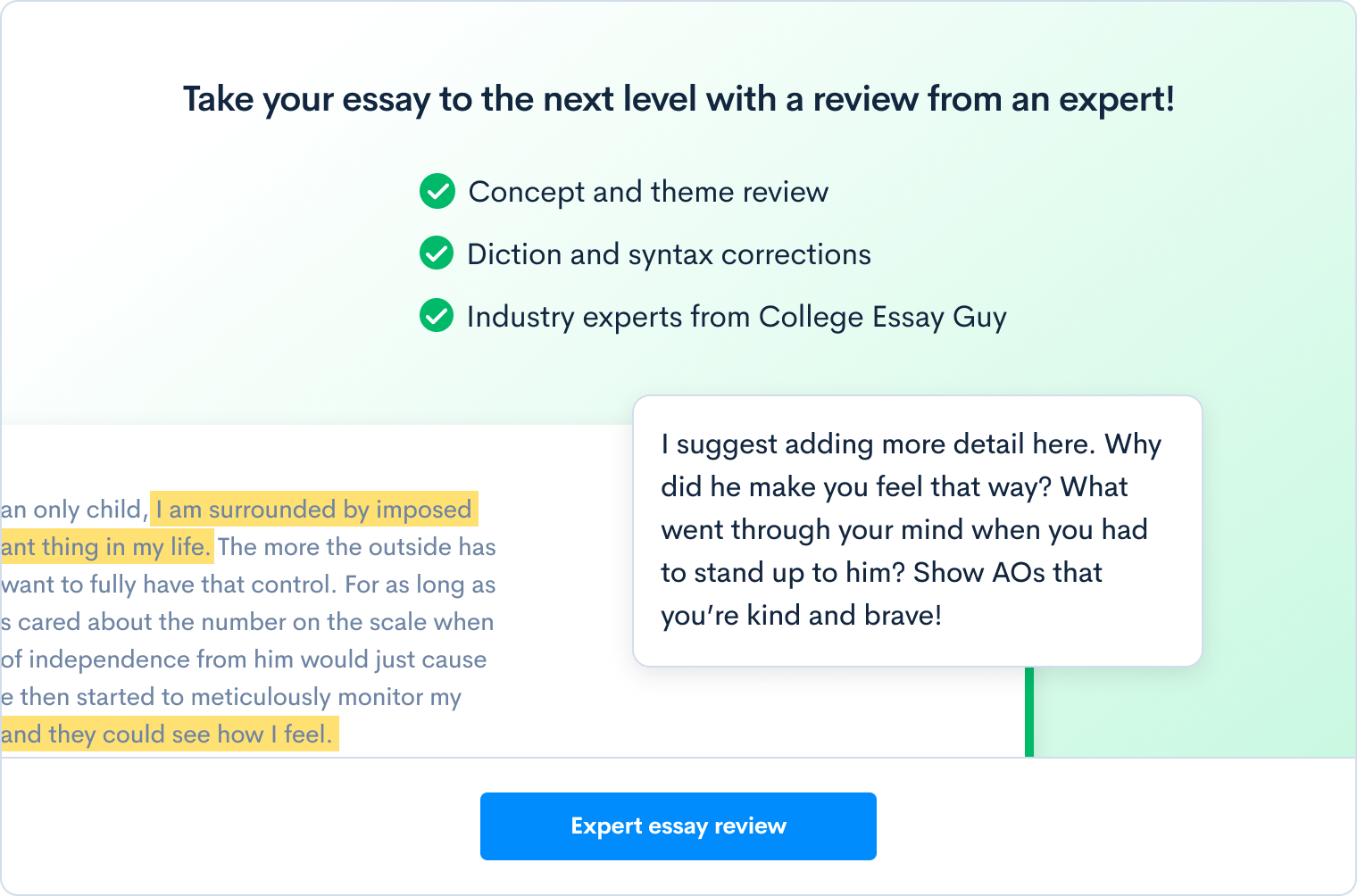Ultimate Guide to the AP Music Theory Exam
The AP Music Theory exam is one of the least common exams taken among self-studiers and enrolled students alike. In 2019, only about 19,000 of the over 2.8 million students taking AP exams took the AP Music Theory exam. Because of this, you might be struggling to find as many resources on the AP Music Theory exam as more popular exams. If you’re planning to take the AP Music Theory exam, whether you have taken the class or self-studied, read on for a breakdown of the test and CollegeVine’s advice for how you can best prepare for it. On Wednesday, May 13 at 12 pm, the College Board will administer the 2020 AP Music Theory exam. For a comprehensive AP exam schedule, along with study tips, and more check out our blog 2020 AP Exam Schedule: Everything You Need to Know. In the Music Theory AP course, students learn to recognize, understand, and describe the basic materials and processes of music that are heard or presented in a musical score. You can expect to practice and develop musical skills while building your understanding of music composition and theory. You will also develop your music vocabulary through class discussions and written analyses of listening selections. Although there are no prerequisite classes for enrollment in the Music Theory course, you do need to be able to read and write musical notation. It is also strongly recommended that you have at least basic performance skills in voice or on an instrument. You’re expected to possess four core skills at the end of the AP Music Theory course. These skills form the basis of many tasks you’re asked to perform on the AP Music Theory exam. The core skills are: Through the four core skills you’ll explore four big ideas that serve as the foundation of the AP Music Theory course. Using these big ideas, you’ll create connections between the concepts and skills learned and deepen your understanding of musical theory. The College Board describes the four big ideas of AP Music Theory as: 1. Pitch: Specific frequencies of sound, known as pitches, are basic units of music. Pitches that are deliberately sequenced through time create melodies, and groups of pitches presented successively or simultaneously form chords. Within an established musical style, chords relate to one another in the context of harmony. 2. Rhythm: Music exists in the dimension of time, where long and short sounds and silences can be combined in myriad ways. This temporal aspect, called rhythm, is often governed by a layered structure of interrelated pulses known as meter. Rhythms are typically grouped into distinctive rhythmic patterns, which help define the specific identity of a musical passage. Musicians use established rhythmic devices to expand expressive possibilities, often achieving their effect by challenging the regularity of the meter or transforming rhythmic patterns. 3. Form: Music exhibits a structural aspect known as form, in which a musical composition is organized in a hierarchy of constituent parts. The specific ways these parts are related, contrasted, or developed produce the unique profile of an individual composition. Specific formal types and functions may be identified when parts of a composition follow established melodic-harmonic patterns, or fulfill established roles within the overall hierarchical structure. 4. Musical Design: Texture, timbre, and expression contribute to the overall design and character of a piece of music or musical performance. The texture of a musical passage arises from the way its layers are produced and distributed, and how they interact to form the totality of sound. Timbre refers to the distinct sounds of specific instruments and voices, arising from the physical manner in which those sounds are produced. Expressive elements are related to musical interpretation and include dynamics, articulation, and tempo. AP Music Theory Course Content The AP Music Theory Course is divided into eight units. Below is a suggested sequence of the units from the College Board, along with a short description of what’s covered in each one. The AP Music Theory exam takes 2 hours and 40 minutes and is comprised of two sections. The first section consists of multiple-choice questions. The second section of the AP Music Theory exam is divided into two parts, the first part features written free response questions, while the second part consists of two sight-singing questions where you’re asked to sing and record two brief, primarily diatonic melodies. 1 hour 20 minutes | 75 questions | 45% of score The first section lasts 1 hour and 20 minutes, is made up of 75 multiple-choice questions, and accounts for 45% of your total score. There are 41-43 questions that use an aural stimulus that test your listening skill and knowledge of musical theory. The other 32-34 multiple-choice questions use printed musical scores as a stimulus to test your understanding of score analysis, melodic organization and developmental procedures, rhythmic/metric organization, texture, and formal devices or procedures. There are 10-12 individual questions, the remainder are grouped into 13 sets containing 4-6 questions. Music used as a stimulus comes from a variety of historical periods—including baroque, classical, romantic, late 19th or 20th century, and contemporary (world music, jazz, or pop). Both instrumental and vocal music are used as stimuli. Example of an aural multiple-choice question, click on the image to hear it played: Example of a non-aural multiple-choice question: 1 hour 10 minutes | 7 questions | 45% of score The second section of the AP Music Theory exam begins with four free response questions: two on melodic dictation and two on harmonic dictation. This section is approximately 25 minutes long and follows a timed recording with repetitions and pauses. You’ll then have 45 minutes to answer the remaining three free response questions about: part writing from figured bass, part writing from Roman numerals, and harmonization of melody. Example of a melodic dictation free response question, click on the image to hear it played : Example of a part writing from figured bass free response question: Example of a part writing from Roman numerals free response question: Example of a harmonization of melody free response question: For excellent examples of AP Music Theory exam’s sixth and seventh free response questions, along with student answers and scoring commentary check out Sample Student Responses and Scoring Commentary Free Response Question 6 and Free Response Question 7 on the College Board’s website. About 10 minutes | 2 questions | 10% of score For the sight singing section of the free response questions you’re required to sing and record two brief, primarily diatonic melodies (about four to eight bars). You have one minute and 15 seconds to practice each melody and 30 seconds to perform them. To get a better feel for the sight singing question, check out the College Board’s website which has the 2019 AP Music Theory exam’s sight singing questions posted on it.
In 2019, 64.1% of students who took the AP Music Theory exam received a “passing” score of 3 or higher. The mean score (3.1) on the AP Music Theory exam was also above passing. Of approximately a fifth of test takers (20.3%) received the top score of 5 with another 18% scoring a 4. Only 12.9% of students received a score of 1 on the exam. If you’re curious about other score distributions, see our post Easiest and Hardest AP Exams. Keep in mind that credit and advanced standing based on AP scores varies widely from school to school. Though a score of 3 is typically considered passing, it is not always enough to receive credit. See the College Board website for regulations regarding which APs qualify for course credits or advanced placement at specific colleges. A full course description that can help to guide your studying and understanding of the knowledge required for the exam can be found in the College Board AP Music Theory course description. Read on for tips for preparing for the exam. Start by taking a practice test to test your understanding of the material. Because the test materials consist of both a written test and digital sound files, it can be difficult to find paired practice material, but the College Board Music Theory AP website does provide one complete test with included sound files from the 1998 exam administration. Once you have taken some kind of diagnostic test, score it to identify the areas you already understand and those in need of improvement. It can be helpful to have a teacher or friend score your free response essays, as these artistic interpretations are more subjective than the multiple choice section. From the practice test, you will get a better idea of where to focus your studying efforts. The Music Theory AP course teaches the mastery of pitches, intervals, scales and keys, chords, meter, and rhythm. You will need to apply this mastery towards complex and creative tasks such as: You will also need to apply your knowledge to the analysis of melody, harmony, rhythm, texture, and form in repertoire drawn mostly from the Western European Common Practice style, but also including jazz, 20th century works, and world music. Refine Listening Skills: As well as studying theoretical applications of your knowledge, you will also need to refine your aural skills. You should listen to musical works attentively and analytically, while developing your musical memory and ability to articulate responses to formal, stylistic, and aesthetic qualities of the musical pieces. Practice Your Performance: Finally, you will need to work on your own musical performance. This will include singing, keyboard, and whatever your primary instrument of choice is. You should especially focus on sight singing, as this is always a part of the free response section. Ask an Expert: For a more specific idea of where to focus your studying, you should consider using a commercial study guide. Because the AP Music Theory course remains one of the less popular courses amongst students, there are not many choices of high quality commercial study guides. One solid option though is Barron’s AP Music Theory with MP3 CD, 2nd Edition. This study guide consistently receives high reviews for its effective summary of the material and test taking strategies specific to the AP Music Theory exam. It comes with two full-length exams including both aural and non-aural sections. Look Online: There are also a number of free study resources available online, for example, musictheory.net. Many AP teachers have posted complete study guides, review sheets, and test questions. Consider Using an App: Finally, another convenient way to study is to use an ear-training app. These provide an easy way to quiz yourself on-the-go. Make sure you read reviews before choosing one – their quality varies widely. Some student-recommended apps and softwares include Auralia and EarMaster. Once you have your theory down, test it out by practicing multiple-choice questions. You can find these in most study guides or through online searches, study.com is a good place to start. You could also try taking the multiple-choice section of another practice exam. Aural Multiple-Choice Questions: Keep in mind that the questions based on aural stimuli will test your listening skills and knowledge about theory largely in the context of examples from actual music literature. These questions will ask you to identify pitch and isolated rhythmic patterns, detect errors in pitch and rhythm, or identify “processes and materials in the context of music literature representing a broad spectrum of genres, media, and styles.” This includes melodic, harmonic, and tonal organization, meter and rhythmic patterns, instrumentation, texture, and formal procedures. Non-aural Multiple-Choice Questions: Questions not based on aural stimuli emphasize score analysis. These skills include small scale and large scale harmonic procedures, melodic organization and developmental procedures, rhythmic or metric organization, texture, or formal devices and procedures. These questions might also cover music terminology, notational skills, and basic composition. The College Board Course Description includes many practice multiple choice questions along with explanations of their answers. There are additional questions available in commercial study guides. As you go through these, try to keep track of which areas are still tripping you up, and go back over this theory again. Focus on understanding what each question is asking and keep a running list of any concepts that are still unfamiliar. The free response section of the Music Theory AP is unlike most other AP exams in its emphasis on aural skills and your own sight singing performance. It can be most closely compared to foreign language exams rather than other theory courses. Free Response Questions 1 & 2: The first two free response questions will focus on melodic dictation. These questions will ask you to notate a melody after listening to it several times. You will always be told ahead how many times the melody will be played (usually 3-4, depending on its length). Make sure to read the directions carefully so that you know how many chances you’ll have for listening. As you listen, pay particular attention to major and minor modes, treble and bass clefs, diatonic and chromatic melodies, and simple and compound meters. Free Response Questions 3 & 4: Questions 3 and 4 in the free response section will focus on harmonic dictation. These questions will most commonly ask you to notate the soprano and bass voices of a harmony after listening to it several times. As in the melodic dictation questions, you will always be told ahead how many times the harmony will be played and you should keep this in mind while undertaking your notation. In this section, pay attention to the notation of soprano and bass lines and the harmonic analysis in a four-voice texture. Free Response Question 5: Question 5 will ask you to part write from a figured bass. There is not typically any listening involved on this question. Instead you are given the opening chord and the proceeding bass line. You are then asked to realize the figured bass in four voices within a traditional voice-leading procedure. For each chord you will need to write the Roman numeral that appropriately indicates its harmonic function. Free Response Question 6: Question 6 similarly asks you to write a four-voice progression in traditional voice-leading procedures, as indicated by the Roman and Arabic numerals. There is no aural component of this question. Free Response Question 7: Question 7 is a little more open to your own artistic interpretation and asks you to compose a bass line for a given melody. Again, there is no aural component. Instead you will need to write an appropriate cadence at each phrase ending, give melodic interest to the bass line, and vary the motion of the bass line in relation to the soprano using only the written progression to guide you. Free Response—Sight Singing: The last two questions on the exam ask you to sight sing a given melody in pitch and accurate rhythm with a steady tempo. For each melody, you will have 75 seconds to practice and 30 seconds to perform the melody. You will hear the starting pitch for each melody at the beginning of the 75-second practice period. These questions demand perhaps the most distinct skill set of any AP question. The College Board’s website has posted the free response questions from the AP Music Theory exam dating back to 2007 on its website, along with sample responses and commentary. As you did at the very beginning of your studying, take a practice test to evaluate your progress. You should see a steady progression of knowledge, and it’s likely that you will see patterns identifying which areas have improved the most and which areas still need improvement. If you’re taking the AP course associated with this exam, your teacher will walk you through how to register. If you’re self-studying, check out our blog post How to Self-Register for AP Exams. For information about what to bring to the exam, see our post What Should I Bring to My AP Exam (And What Should I Definitely Leave at Home)? Want access to expert college guidance — for free? When you create your free CollegeVine account, you will find out your real admissions chances, build a best-fit school list, learn how to improve your profile, and get your questions answered by experts and peers—all for free. Sign up for your CollegeVine account today to get a boost on your college journey! Looking for more info about the AP exams? Look no further: When is the AP Music Theory exam?
About the AP Music Theory Exam
Skill
Description
Percentage of Exam Score (Multiple-Choice Section)
Analyze Performed Music
Take musical terms, concepts, and relationships and apply them to performed music (aural).
48%
Analyze Notated Music
Use musical terms, concepts, and relationships and apply them to notated music (written).
44%
Convert Between Performed and Notated Music
Convert music between aural and written forms using conventions of musical notation and performance.
8%
Complete Based on Cues
Following 18th-century stylistic norms complete music based on cues.
Not assessed in multiple-choice questions
Unit
Content Taught
Music Fundamentals 1: Pitch, Major Scales and Key Signatures, Rhythm, Meter, and Expressive Elements
How pitch and rhythm work together to become melody and meter—building musical compositions.
Music Fundamentals 2: Minor Scales and Key Signatures, Melody, Timbre, and Texture
Use knowledge of pitch patterns and relationships in major scales and apply it to minor scales.
Music Fundamentals 3: Triads and Seventh Chords
The fundamentals of harmony.
Harmony and Voice Leading I: Chord Function, Cadence, and Phrase
Apply knowledge of harmonic materials and processes using it to explore the procedures of 18th-century style voice leading.
Harmony and Voice Leading II: Chord Progressions and Predominant Function
Describe, analyze, and create complex harmonic progressions in the form of four-part (SATB: soprano, alto, tenor, and bass) voice leading.
Harmony and Voice Leading III: Embellishments, Motives, and Melodic Devices
Exploration of the skills and concepts of harmony and voice leading.
Harmony and Voice Leading IV: Secondary Function
Building on knowledge of harmonic relationships and procedures to deepen your understanding of keys, scale degrees, and chords.
Modes and Form
The conventions that influence the character of music such as modes, phrase relationships, and forms.
AP Music Theory Exam Content
Section 1: Multiple Choice
Question Type
Number of Questions
Timing
Aural Multiple-Choice
41-43
Approximately 45 minutes (timed recording with repetitions and pauses)
Non-aural Multiple Choice
32-34
35 minutes
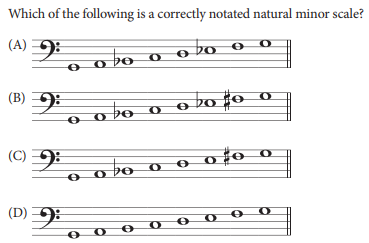
Section 2(a): Free Response
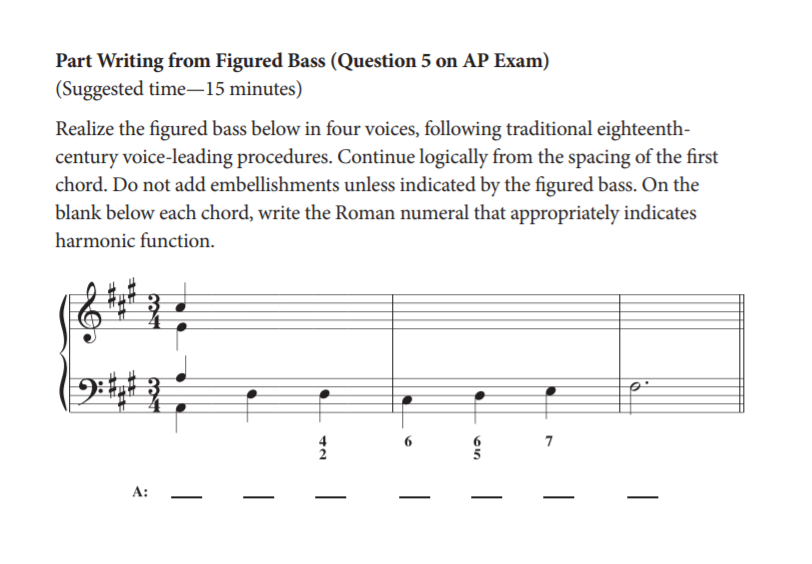
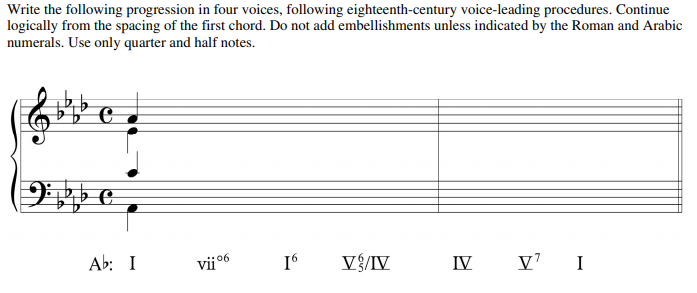
Section 2(b): Free Response: Sight Singing
AP Music Theory Score Distribution, Average Score, and Passing Rate
Exam
5
4
3
2
1
AP Music Theory
20.3%
18%
25.8%
23%
12.9%
Best Ways to Study for the AP Art History Exam
Step 1: Assess Your Skills
Step 2: Study the Material
Step 3: Practice Multiple Choice Questions
Step 4: Practice Free Response Section
Step 5: Take Another Practice Test
Step 6: Exam Day Specifics
